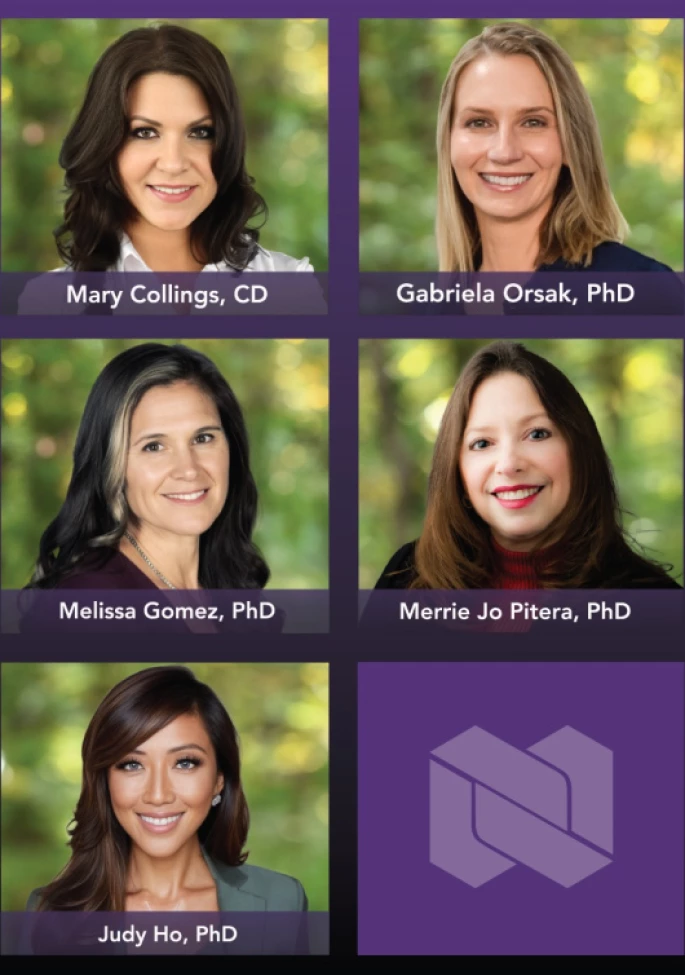“Commonly mentioned but often misunderstood, intersectionality is critical to achieving equity.” –Global Citizen
Intersectionality is not only a relevant topic; it is also one that continues to emerge during our internal DEIB (Diversity, Equity, Inclusion, and Belonging) programs. To promote further conversation, the IMS DEIB Committee hosted an “Article Club” event to learn more about the origin of the concept and its impact on our modern workplace. This event was facilitated by IMS Senior Director of Acquisition & Integration Michelle Diago, who has graciously shared takeaways from our thought-provoking discussion.
You may be thinking, "Should I know what intersectionality means?" Do not worry; you are not alone. Intersectionality sounds familiar, like a word we should know, but it turns out that very few of us had heard of the term or fully grasped its meaning before reading and discussing these articles. This naivete runs far beyond our group and into the world around us.
The Definition of Intersectionality
Dr. Kimberle Crenshaw, a legal scholar and the pioneer of intersectionality, simply describes it as, “…how certain aspects of who you are will increase your access to the good things or your exposure to the bad things in life.” Per Merriam-Webster, it is “the complex, cumulative way in which the effects of multiple forms of discrimination (such as racism, sexism, and classism) combine, overlap, or intersect especially in the experiences of marginalized individuals or groups.”
Our discussion at IMS produced many insightful explanations:
- Diversity is quantifying our differences; intersectionality is how all the differences come together and interact with one another.
- Racism only judges one aspect of a person; intersectionality represents all aspects.
- Intersectionality is understanding that discrimination is not one-dimensional.
- Intersectionality is a web, and we have a range of identifiers.
- Intersectionality is the acknowledgment and action taken to assist and lift those who may have a more challenging path on multiple levels.
- Intersectionality is like playing the same video game with different difficulty settings.
- Intersectionality is the idea that each person’s experiences are distinct, based on a different combination of factors.
Intersectionality in Action
We initially understood the concept of intersectionality to be the acknowledgment that people’s identities can have multiple layers—and that most do. Consider two attendees at a women’s conference. We may assume they share many similar experiences as women, but that is only one part of their identity. What if one woman is White and the other is African American? What if one grew up in a rural community and the other attended city schools? What if one has a mental or physical disability?
Everyone’s life experience is uniquely theirs, and the depth of intersectionality is not always visible at first sight. The next time you ride in an elevator, walk down an airport terminal, or stand in a grocery store line, take a moment to observe each person you encounter. What challenges could they have faced in their lives due to race, age, gender, and/or sexual orientation? What about the factors you cannot see at first glance, such as socioeconomic status? How does the combination of these categories affect each individual person, including the challenges they may face or the opportunities they may have access to?
Though they may not have had a label for it, IMS consultants have seen examples of intersectionality through their work in trials—often when it comes to understanding different venues and juror pools. Each case brings a unique group of potential jurors who come from many backgrounds and experiences. It is short-sighted to assume how a juror may lean based only on their ethnicity. As one article put it, “there are no single-issue lives.” It is critical to keep that in mind when trying to understand how courtroom audiences absorb information and make decisions.
Moving Intersectionality Forward
In the Vox article that we read, NY Times best-selling author David French was quoted as saying, “Where the fight begins is when intersectionality moves from descriptive to prescriptive.” We interpreted this to mean that once someone is introduced to intersectionality, the acceptance of its existence can be broadly embraced. The conflict comes in when people believe that someone else’s gain is going to be their personal loss. However, the intersectionality movement is not about shifting the balance of power—it is about eliminating power differences altogether and gaining full equity. The goal is power with, not power over.
In the past few years, IMS has worked hard to create a welcoming and equitable environment by building a strong DEIB program. This program not only focuses on our employees—with events like book/article clubs, educational speakers, and movie discussions—but we also take time to focus on supporting our clients and helping them to understand and connect with diverse audiences.
Now, the concept of intersectionality has given us a new box to check with each of our DEIB initiatives. It means taking what we are already doing to another level. How do we educate, celebrate, and discuss issues beyond the one-dimensional classification? How do we support the beautiful web that our colleagues, clients, and jurors experience? Though intersectionality was first defined over 30 years ago, it has become clear to us that the journey is ongoing—and we look forward to contributing to its progress.
“I’m grateful to have groups like this where we take everyone’s personal experience and try to understand them.” –Article Club Participant
References:
Intersectionality, explained: Meet Kimberlé Crenshaw, Who Coined the Term | Vox
What Is Intersectionality? | Intersectional Justice
What Is Intersectionality and Why Is It Important? | Global Citizen
Intersectionality 101 | Learning for Justice - YouTube
The Origin of the Term ‘Intersectionality’ | Columbia Journalism Review
View this blog on the National Law Review: Definition of Intersectionality for Lawyers and Law Firms (natlawreview.com)




